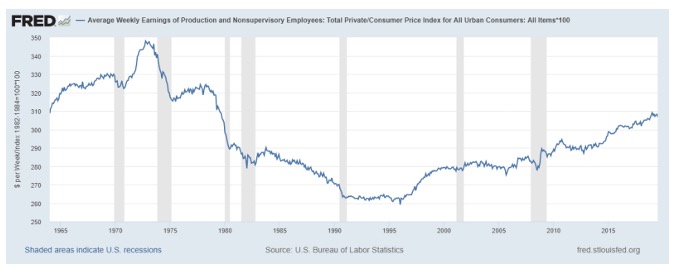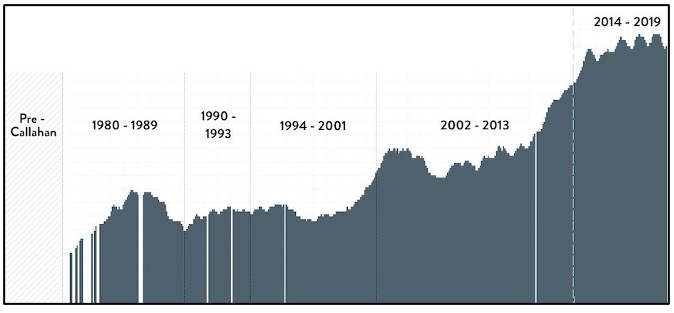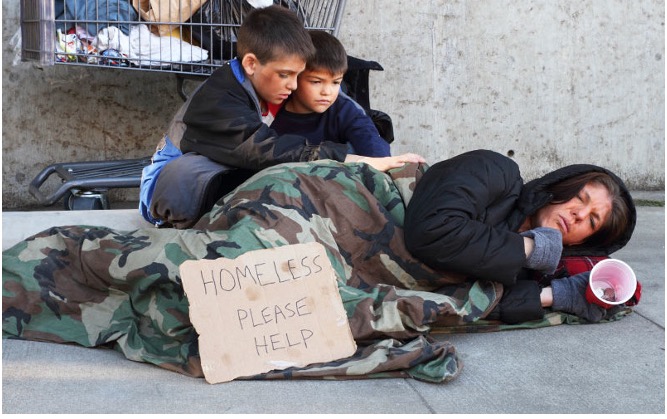Comments
PLANNING WATCH - Nearly all homeless people grew up in a house or apartment. They did not wake up one day and decide they would prefer to live in tents, alleys, sidewalks, or cars. External factors forced them into these dangerous situations, despite the blame-the-victim explanations that the mainstream media regularly repeats in its stories about homelessness. The same holds true for the instant experts who venture out their front door, see a desperate soul, and conclude that drug addiction and mental illness are the main causes of homelessness. Some go further and even blame the homeless for most street crimes, ignoring pervasive white collar crimes, such as wage theft, building code violations, embezzlement, pay-to-play, identity theft, and bribery, even though they inflict far more damage than street crimes and rarely result in prosecution or jail sentences.
That said, Bob Dylan’s famous line, “You don’t need a weatherman to know which way the wind blows.” does not apply to the homeless crisis. You definitely need a weatherman who understands the underlying causes of homelessness, and who does not repeat the conventional spin that homeless people are responsible for their own plight.
Underlying causes: What do reliable experts see as the causes of homelessness in Los Angeles, other US cities, and in wealthy countries, like France and Germany?
The answer is a decades-long perfect storm responsible for the increase in homelessness. Furthermore, these headwinds are not letting up, and short-term band-aids, such as LA’s mushrooming anti-camping ordinances, make little difference.
Cause #1: Most of the homeless are nearly invisible. They include families with kids, individuals who deliberately keep a low profile, and people quietly living in cars and RV’s. They succeed at blending into the woodwork. Furthermore, many of those who are homeless developed mental illness and addiction on the streets, not before.
Cause #2, when controlled for inflation, average US wages have been stagnant for the past half century, as shown on this Federal Reserve Bank chart. Of course, the top few percent have done extremely well. While they keep real estate agents busy, most people have been priced out of the housing market in Los Angeles and elsewhere. When they can find affordable housing, they become renters. If not, they face three grim choices to avoid homelessness. They can become rent-burdened, live in overcrowded conditions, or if they can manage it, move cheaper housing markets.

Cause #3: The cost of rental housing, homes, and condos in real wages (i.e., controlled for inflation) has soared in LA, California, the U.S., and in similar countries. One reason is the cash purchase of homes and apartments by real estate companies. That has increased housing costs to the point that most consumers can no longer afford to buy a house. Furthermore, over the last year inflation has been 8 percent, and wages rose by 4 percent. This loss of consumer purchasing power has also made the housing crisis worse. Plus, HUD’s non-market housing programs were terminated decades ago, except for severely underfunded Section 8 apartment vouchers. In LA only about 10 percent of eligible applicants win a Section 8 lottery voucher, and only half of these winners successfully find a Section 8 apartment.
As for new local public housing, it disappeared in 2011-12, when the State legislature dissolved California’s 400 plus redevelopment agencies. These agencies had been required to allocate 20 percent of their budgets to subsidized housing programs.
In L.A., older apartments protected by the Rent Stabilization Ordinance have been gradually demolished, making way for new market rate and luxury housing, 90 percent of which easily obtain zoning waivers that sweep aside height, density, and parking requirements. These new entitlements also increase land values, resulting in either highly profitable flipping or the construction of new, high-rent apartment towers for those with high incomes.

Why are so many people homeless? By the Coalition for the Homeless.
This is a perfect storm to drive up homelessness, as well as displacement, like the LAPD’s homeless sweeps in LA’s Venice and Echo Park neighborhoods. Constituents may be temporarily pleased to see local homeless encampments uprooted, but the underlying causes of the homeless crisis remain, and the trends still point upward.
Denial of the basic causes of homeless might be an effective short-term political strategy, but denial impedes effective long-term housing programs. Public housing programs are not restored, average real wages remain stuck at their 1970 levels, Rent Stabilization Ordinances are not strengthened, and restrictions on speculative purchase of residential units remain in limbo.
(Dick Platkin is a retired Los Angeles city planner who reports on local planning issues for CityWatchLA. He serves on the board of United Neighborhoods for Los Angeles (UN4LA). Previous Planning Watch columns are available at the CityWatchLA archives. Please send questions and corrections to [email protected].)





